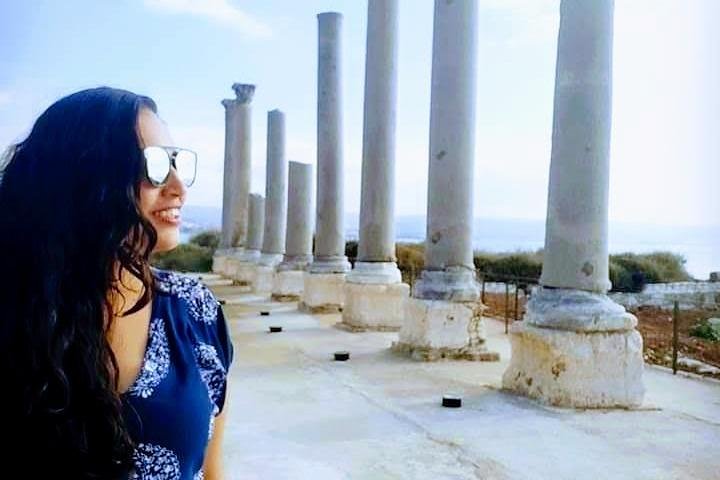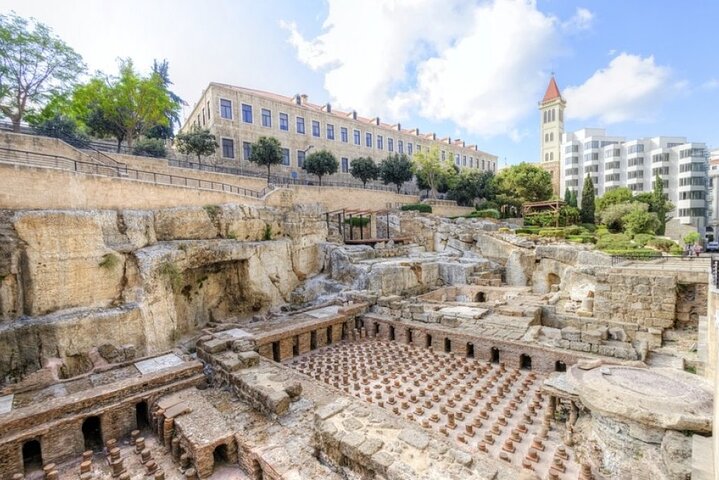Discover the ancient wonders of Lebanon on a private full-day tour. Explore the historic cities of Sidon and Tyre, visit UNESCO-listed sites, and immerse yourself in the rich history and culture of the region.
Discover the ancient wonders of Lebanon on a private full-day tour. Explore the historic cities of Sidon and Tyre, visit UNESCO-listed sites, and immerse yourself in the rich history and culture of the region.
- Crusaders Sea Castle - The Sidon Sea Castle, constructed by the crusaders in the 13th century on a small island linked to the mainland by a causeway, served as a fortress in the holy land. It stands as one of the most notable historical landmarks in Sidon, Lebanon. The Mamluks largely destroyed the castle in 1291, but it was later restored by…
- Crusaders Sea Castle - The Sidon Sea Castle, constructed by the crusaders in the 13th century on a small island linked to the mainland by a causeway, served as a fortress in the holy land. It stands as one of the most notable historical landmarks in Sidon, Lebanon. The Mamluks largely destroyed the castle in 1291, but it was later restored by Fakhr el-Dine Maan II in the early 17th century. Old illustrations depict the fortress as a place of great beauty, though few of its original decorations remain today.
- Khan al-Franj - Khan al-Franj is a key attraction in Sidon. Built in the early 17th century by Emir Fakhreddine II, it served as a hotel for ambassadors and a hub for commercial exchange between Lebanon and France. The hotel quickly became a center for literature, religion, history, industry, and diplomacy, embodying a home for culture and civilization. This typical khan features a large rectangular courtyard with a central fountain, surrounded by covered galleries.
- Soap Museum - Saida - The Soap Museum in Sidon is dedicated to Levantine soaps. Originally constructed by the Hammoud family in the 17th century, the museum traces the history, development, and manufacturing techniques of soap making in the region. Visitors can watch demonstrations of traditional olive oil soap production and learn about the history of “hammam” (bath) traditions. The museum also showcases artifacts found during onsite excavations, including clay pipe heads from the 17th to 19th centuries and pottery fragments. The building itself is an old soap factory from the 17th century, with parts dating back to the 13th century.
- Sidon Souks - The souk of Sidon is the heart of the city’s retail and craft industry. It is a labyrinth of narrow alleyways filled with small kiosks, shops, cafes, street vendors, butchers, grocers, shoemakers, tailors, and jewelers.
- Basilica of Our Lady of Mantara - بازيليك سيدة المنطرة - Our Lady of Awaiting, also known as Our Lady of Mantara, is a Melkite Greek Catholic shrine in Maghdouché, Lebanon, discovered on September 8, 1721, by a young shepherd. The shrine includes a tower topped with a statue of the Virgin and Child, a cathedral, a cemetery, and a sacred cave believed to be where the Virgin Mary rested while waiting for Jesus.
- Tyre - Tyre is an ancient Phoenician port city and the birthplace of Elissar, the Phoenician princess who founded Carthage. Renowned for its purple dye made from murex sea snails, Tyre boasts two main archaeological sites, “Al-Bass” and “Al-Mina,” which highlight its historical importance. With a beautiful seaside location, it is a popular holiday destination known for its pristine beaches. The town’s origins date back to around 2750 BC, and it has been ruled by Egyptians, King Hiram, Assyrians, Neo-Babylonians, Greeks, Seleucids, Romans, Byzantines, Arabs, Crusaders, Mamluks, and Ottomans.
- Al-Bass Archaeological Site - The Al Bass Archaeological Site is the largest and best-preserved example of a Roman Hippodrome. This area, which served as the main entrance to ancient Tyre, includes the remains of a necropolis flanking a wide monumental causeway dominated by a Roman triumphal arch from the 2nd century AD. Other notable features include an aqueduct and one of the largest hippodromes of the Roman world. The site contains a necropolis with several hundred well-preserved sarcophagi, an intact Roman road, an aqueduct, and a monumental arch.
- Ruins of Tyre: The Egyptian Port - Tyre once had two harbors: the Sidonian in the north and the Egyptian harbor in the south. Today, the port of Tyre is a bustling fisherman’s port, where the remains of a 750-meter-long mole can still be seen. The remnants of ancient buildings are also visible in the water.

- Private transportation
- Tour Leader
- Hotel Pick up & Drop off
- In-vehicle air conditioning
- Private transportation
- Tour Leader
- Hotel Pick up & Drop off
- In-vehicle air conditioning
- Lunch
- Gratuities
- Lunch
- Gratuities
Explore the captivating history and vibrant culture of Sidon, Tyre, and Maghdouché on our private tour. From ancient ruins to sacred sites, join us for an unforgettable adventure through Lebanon’s rich past and present. Uncover secrets of civilizations, savor local cuisine, and immerse yourself in the warm hospitality of these timeless destinations….
Explore the captivating history and vibrant culture of Sidon, Tyre, and Maghdouché on our private tour. From ancient ruins to sacred sites, join us for an unforgettable adventure through Lebanon’s rich past and present. Uncover secrets of civilizations, savor local cuisine, and immerse yourself in the warm hospitality of these timeless destinations. Embark on this extraordinary journey with us and experience the magic of Sidon, Tyre, and Maghdouché.
For a full refund, cancel at least 24 hours before the scheduled departure time.
For a full refund, cancel at least 24 hours before the scheduled departure time.














